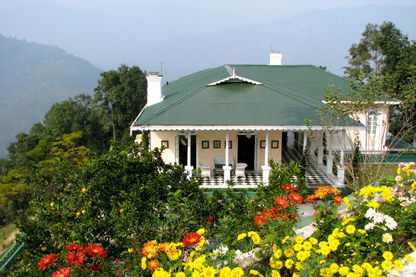Introduction
The Victorian holiday resort of Darjeeling is a premier hill station and a major tea-growing centre in the north of West Bengal state, near Sikkim.
Darjeeling has a considerable Tibetan presence and astonishing views of Kanchenjunga Mountain, the third highest in the world; naturally, trekking is a popular pastime in the area and it is possible to attempt the outstanding hike to Sandakphu from September to November in order to see Everest.
The best way to reach Darjeeling is with a flight from Calcutta, capital of West Bengal state.
Hill Station
The heart of Darjeeling is surrounded by hillsides of thickly covered silver fir forests and terraced tea plantations; the town's beauty and riches have ensured its position as one of the finest hill stations to escape to when the summer heat becomes too intense.
Darjeeling was for a time the most glamorous and far-flung outpost of the British Empire, attracting adventurers and socialites alike and still retains an air of distinction.
Tea Plantations
Darjeeling's delicate teas are considered among the finest in the world.
The region's black teas are prized throughout the world, especially in Britain, and are normally produced from the China Jat, China Hybrid and Hyrid Assam varieties. However, Darjeeling oolong, green and white teas are increasingly being produced by estates.
Tiger Hill
Packed vehicles leave the Clubside in Darjeeling each morning for the 12-km drive to Tiger Hill to watch the incredible sunrises.
The incredible viewpoint on the Singalila Range has unmatched 360-degree panoramas of the Himalayas and regularly attracts a pre-dawn mass exodus from Darjeeling.
Ghoom Monastery
A trip to Tiger Hill is best combined with a visit to Ghoom, with its many interesting old monasteries.
The most important and venerated of these is Yiga-Choling Gompa, or Old Ghoom Monastery. This Yellow-Hat Buddhist Monastery was built in 1850 by Sharap Gyatso and houses famous Buddhist scriptures.
Ghoom can also be reached via the steam-powered Toy Train.










